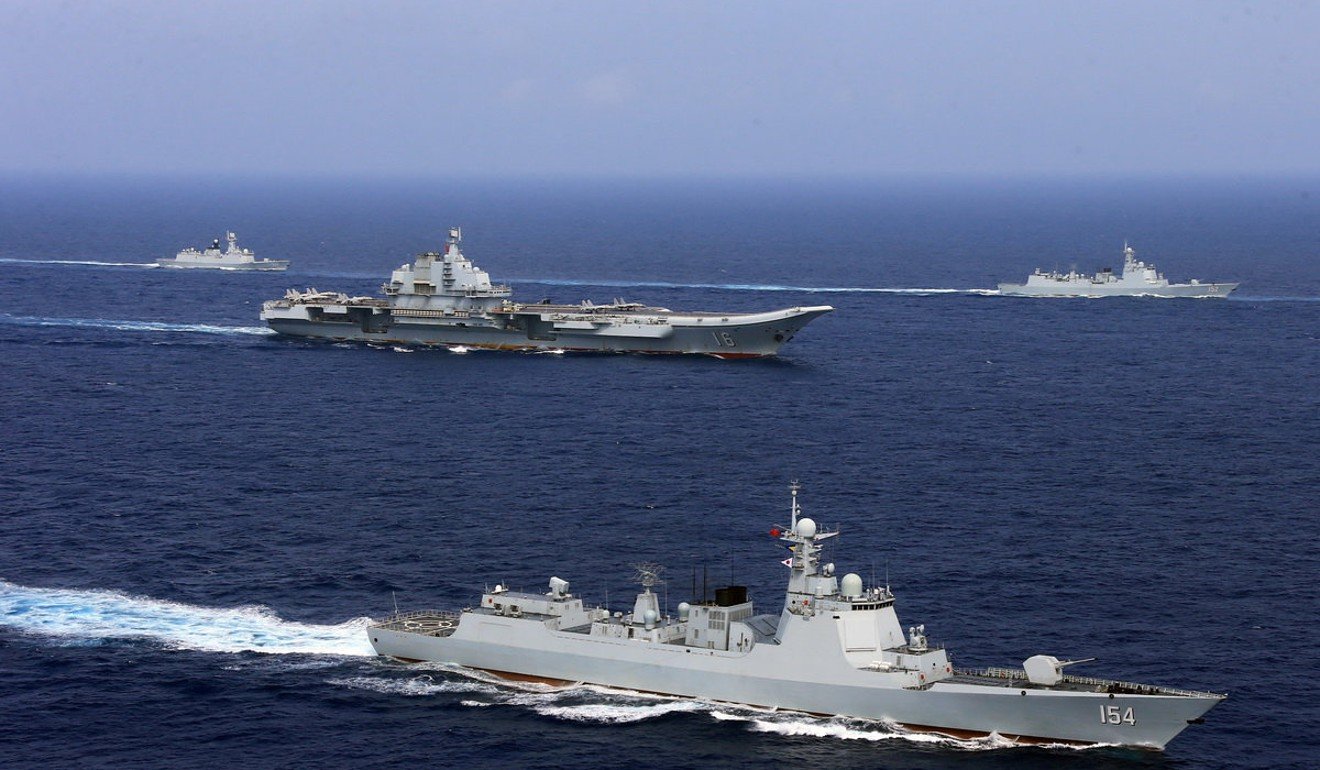
China tries to strengthen navy in face of growing US challenge to South China Sea claims
- Beijing is building up its forces in disputed waters, but advanced carriers still give US an advantage
China is boosting its South China Sea naval fleet in the face of America’s increasingly assertive attempts to challenge Beijing’s claims to the disputed waters.
Military observers said it would allow the South Sea Fleet to keep better track of foreign vessels, but pointed out that its military strength still lagged behind that of the United States.
Two American aircraft carrier strike groups, one led by the USS Ronald Reagan and the other by the USS John C Stennis, are conducting a dual operation in the Philippine Sea, the US Navy announced on Thursday.
US Navy Vice-Admiral Phillip Sawyer, commander of the Seventh Fleet, said that deploying two carrier strike groups provided unparalleled naval combat power and showed US commitment to “a free and open Indo-Pacific”.

Beijing has long been dismayed by the US military presence in the Asia-Pacific and sees some of its operations near disputed island reefs as an infringement of sovereignty.
The US, however, says the measures are necessary to uphold freedom of navigation.
China is currently modernising its navy to counterbalance the US, but still lags well behind the US in terms of firepower.
The Seventh Fleet can call on the 12-ship Ronald Reagan carrier strike group, the largest in the US Navy, which includes 75 aircraft and seven state-of-the-art Arleigh Burke-class destroyers and three Ticonderoga-class cruisers.
Pilots rescued after USS Ronald Reagan warplane crashes into Philippine Sea
The Seventh Fleet also features a dozen nuclear submarines, four amphibious landing ships carrying helicopters and vehicles, 16 to 20 reconnaissance aircraft and four mine sweepers.
It is also able to call on reinforcements from the Third Fleet and its four carrier groups – the USS John C Stennis, the USS Carl Vinson, USS Theodore Roosevelt and USS Nimitz.
At present the People’s Liberation Army South Sea Fleet has a strength of more than 80 ships – including 12 guided missile destroyers, 33 frigates, two submarine squadrons and 20 amphibious landing ships – but cannot match the US in terms of carrier power.
Amid its ongoing efforts to catch up with the US, the fleet is currently being strengthened with China’s most advanced warships and equipment.
The fleet currently includes five type 052D destroyers, which are equipped with advance radar and electronic systems that are on roughly the same level as the Aegis combat system found on America’s Aleigh Burke-class ships.
Collin Koh, a maritime security expert at Nanyang Technological University in Singapore, said that the Chinese navy had commissioned about 44 new surface vessels in 2016 to 2017, with numbers roughly split evenly among its three fleets.
“The build-up of the fleet results in closing the gap in terms of the South Sea Fleet’s ability to muster fleet availability to cope with rising demands, such as the increased ability to deploy ships on sustained stations at sea to keep track of foreign vessels,” he said.
However, most the South Sea Fleet’s vessels are less advanced than their US counterparts.

The Ronald Reagan and John Stennis are both Nimitz-class nuclear-powered aircraft carriers, with a displacement of 120,000 to 130,000 tonnes.
They can each carry up to 90 fixed-wing aircraft and helicopters, and eject F/A-18G Super Hornet fighters on four catapults simultaneously.
By contrast China has only one aircraft carrier in service – the Liaoning – which is currently undergoing maintenance. The other carrier is still conducting sea trials and has not yet been commissioned.
Deal gives China access to war room mapping software used by Nato
The conventionally powered carriers, which are based on a Soviet-era design, are no match for the US vessels.
They have a full load displacement of less than 60,000 tonnes and can carry no more than 40 aircraft at a time.
As for the aircraft, while China’s J-15 Flying Shark fighters have a longer range and better manoeuvrability than the US Super Hornets, but can carry fewer weapons and have an inferior performance at lower speeds.

Over the past three years US warships conducting freedom of navigation operations have been confronted at least 12 times by Chinese vessels, including a near collision by the USS Decatur and the Chinese destroyer Lanzhou in late September.
Lanzhou, a Type 052C destroyer, has 6,000 tonnes displacement and an eight-cell missile vertical launch system, compared with the Decatur’s 9,000 tonnes and 96-cell launch system.
Koh said the US Navy was still stronger in its long-range strike capabilities, while its allies in Asia, such as Australia, also have significant naval capabilities or command key geostrategic positions around the South China Sea.
China’s military must move beyond self-defence strategy, PLA says
And even after adding new vessels, the Chinese navy could still be hampered by a lack of manpower and coordination among its different forces.
“The rate of build-up in hardware has been so rapid one should wonder whether this keeps pace with adequate manning levels,” Koh said.
“In this case, we are talking about not a mere infantryman but a technically competent sailor who needs to be trained appropriately for seamanship and high-end naval operations.”

